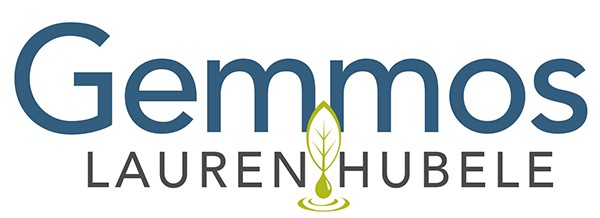What Polyvagal Theory, Gemmotherapy, and Activism Have in Common
June 30, 2020
“Safety and security don’t just happen, they are the result of collective consensus and public investment.”
– Nelson Mandela
Safety. It is exactly what your emotional core longs for. When you are safe, you can connect. When you connect, you can create. And when you create, you experience freedom to be who you were born to be.
So how do we achieve safety, especially now, in this unprecedented time? I certainly won’t claim to have the answer to that question, but I have been making important connections worth sharing as I strive to take what I know and grow it further.
I know that when something is of great value to my work, it begins to show up in different forms from a variety of sources. That has been my exact experience with Polyvagal theory, the masterful work of renowned neuroscience researcher, Dr. Stephen Porges.
What is Polyvagal Theory?
“Polyvagal theory offers a way to understand the human autonomic nervous system and directly engage with our habitual patterns of response.”
This is the definition that Deb Dana, the foremost teacher of Polyvagal theory, shares.
I have found the Polyvagal theory to provide a remarkable lens offering insight into how and why smart, capable people often find themselves stuck in a loop of making forward strides, becoming overwhelmed and then shutting down. This short video cuts to the core of the theory and will illustrate my point.
While there is certainly much more to this theory to address in future posts, I want you to understand this. A perceived sense of safety is the key to step out of the cycle I described. Achieving that can begin with the use of some certain extracts in microdoses.
How Polyvagal theory (PVT) connects with Gemmotherapy
Over the past two years, I have been framing and reframing the use of microdoses of specific Gemmotherapy extracts in search of a coherent and accessible method for selection. I have looked at extracts through the lens of whether they are stimulating or sedative, what emotion they best address and whether their action on the nervous system is to tonify or harmonize.
While it has all helped me move closer to something useful and applicable, the selection of extract relied on a considerable amount of subjective information. To teach others to make a reliable decision, objective symptoms are needed, and that just may be where the Polyvagal theory is leading me.
Through private tutoring sessions with a colleague of Dana’s and discussions with my Gemmotherapy colleagues, I have begun to develop what may be the guideposts I have been in search of all along. The recent pandemic has certainly pushed things along, giving me fertile testing ground for harmonizing jangled nervous systems.
At this point in the development, I am borrowing some PVT language and looking at extracts for the nervous system as either mobilizers for the central nervous system or organizers for the sympathetic response. The mobilizing extract would be used first thing in the morning to support forward movement, and the organizer would interrupt old patterns of fight or flight when encountered.
And how will this help me be an activist?
Let’s now weave Polyvagal theory and Gemmotherapy’s support for the nervous system into the present moment. To speak out against injustice, whether it is in the form of microaggressions or the blatant disregard of lives, requires you to begin from a place of safety. If you have suffered from injustices or any trauma, staying both mobilized and out of fight or flight will be nearly impossible.
This is where Gemmotherapy can come in, because the plant meristem cells in the extracts are actually reminding your autonomic nervous system how it is meant to respond, pretrauma. Combined with therapeutic support, your first steps as an activist, recognizing there is innocent suffering going on in society, stand up and call it out, can be successful. You will no longer fall into habitual patterns of response. To do so without experiencing a perceived threat or danger will allow you to call it out again and again without becoming overwhelmed or shutting down. Just think of all the good that could be done.
You may also be interested in:
Exploring Polyvagal Theory: Activism and your Autonomic Nervous System
Our current times have encouraged many to rally and join forces with local activist movements. But have you considered how that engagement may impact your nervous system? Maegan and Lauren provide a quick overview of the three principles of Polyvagal Theory which then sets the stage for a first-hand account from guest Christine Terrell. Just…
Exploring Polyvagal Theory: A Question from our Audience on the Dorsal Vagal State
Enjoy our teamwork in action as Maegan, Cameron and I work out some answers for our listener in Romania in the special episode. You won’t want to miss these pre-recorded mini-podcast episodes, as we break from our normal recording schedule during the month of December.
Exploring Polyvagal Theory and Gemmotherapy: Real Life Learning
In this episode, Megan and Lauren share a few of their recent responses to real-life situations that have provided perfect opportunities to explore Polyvagal Theory and Gemmotherapy extracts for emotional resiliency. The polyvagal theory is the masterful work of Dr. Stephen Porges that in short, it helps us see and understand habitual emotional patterns enough…
Explorations of Polyvagal Theory: Addressing trauma, can we do better?
Do you or someone you love suffer from the effects of developmental or complex trauma? If so you won’t want to miss a minute of this conversation. Listen in as we make serious inroads into understanding the subtle but significant challenges that disrupt the process of healing trauma. Six months ago we set out to…
